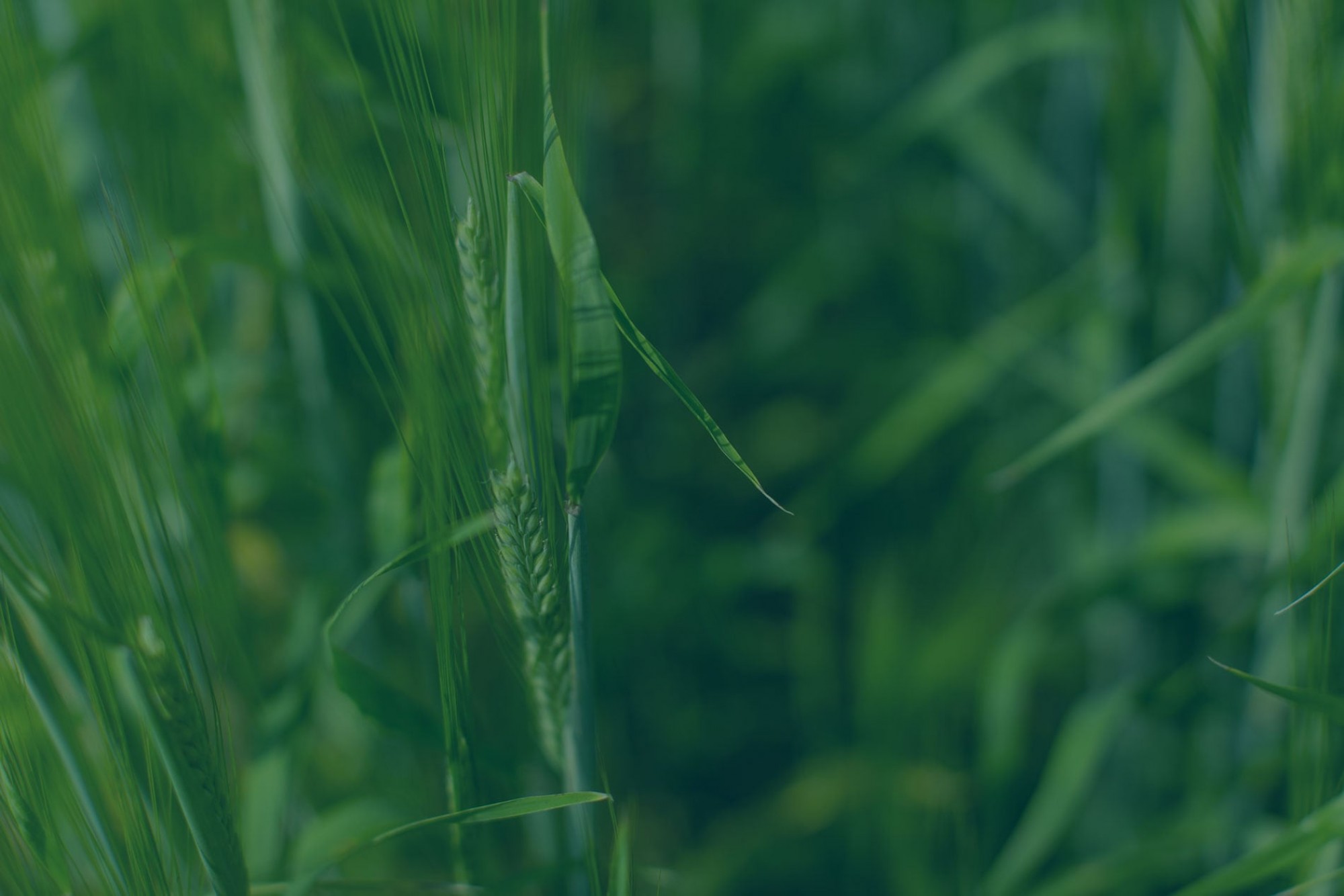Pre-harvest weed scouting and herbicide resistance
As we approach harvest season, it is time to scout fields to find out how effective the weed control is, and plan for pre-harvest herbicide and the next year. Scouting at this time of the year can give you information on:
- Species of weeds that survived the weed management measures.
- Field-scale patterns of weeds, from which a preliminary diagnosis can be conducted on the weed management measures.
- Potential herbicide resistance.
Species of weeds that survived the weed management measures
When scouting the field before harvest, pay attention to the following:
- Are there weed species on the herbicide label, but survived herbicide application?
- How much land do they infest compared to previous years?
- Are there new species found?
- Are there field-scale patterns associated with uncontrolled weeds?
Field-scale patterns:
If field-scale patterns are found, it is a good way to diagnose the potential reason behind uncontrolled weeds. Some of the examples include plugged nozzles, spray drift, soil residue and more. The use of drone or satellite imagery is helpful in detecting field-scale patterns.
Refer to the following diagram for examples of common patterns.
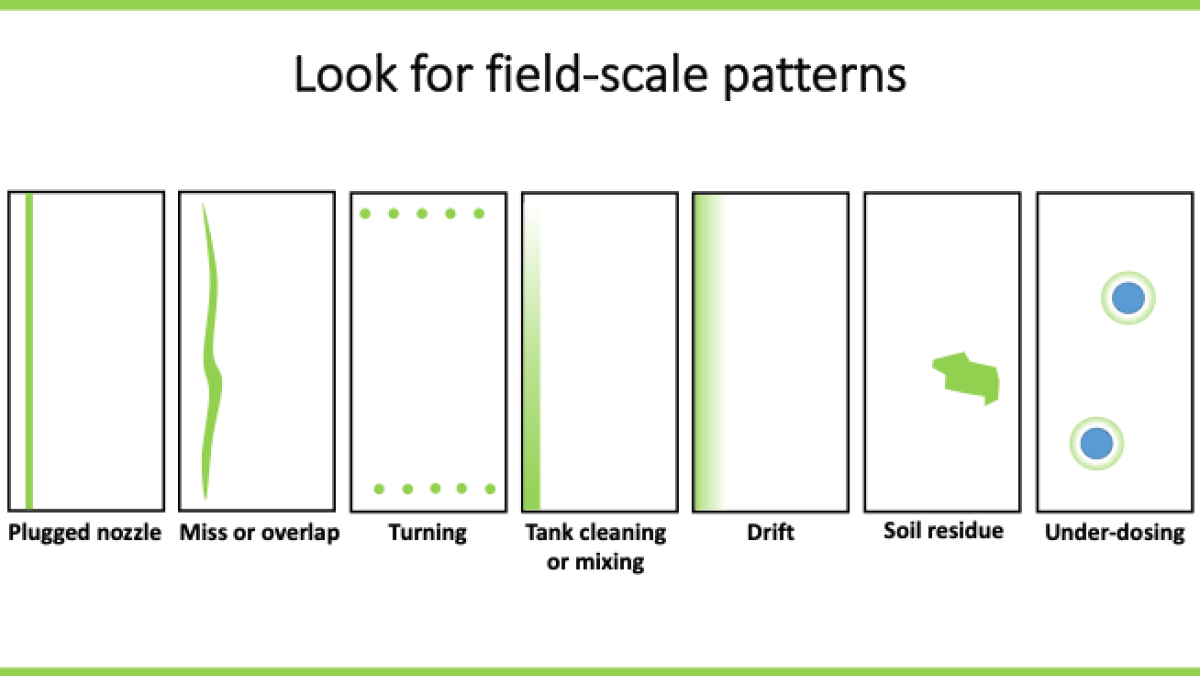
What to do if you suspect herbicide resistance:
Uncontrolled weeds do not necessarily mean herbicide resistance. Herbicide resistance is the inherited ability of a plant to survive and reproduce following exposure to a dose of herbicide normally lethal to the wild type. In other words, a plant must 1) receive a dose of herbicide that is lethal; and 2) survive the lethal dose to confirm its resistance to a certain herbicide. Such weeds can pass the genetic ability of herbicide resistance to offspring.
When suspecting a patch of weeds to be herbicide resistant, follow this thought process:
1) Consider potential reasons in herbicide spray practices. Are there reasons to rule out? Rule out the possible reasons for herbicide failure before considering herbicide resistance as a reason. Consider ways to improve on herbicide application techniques.
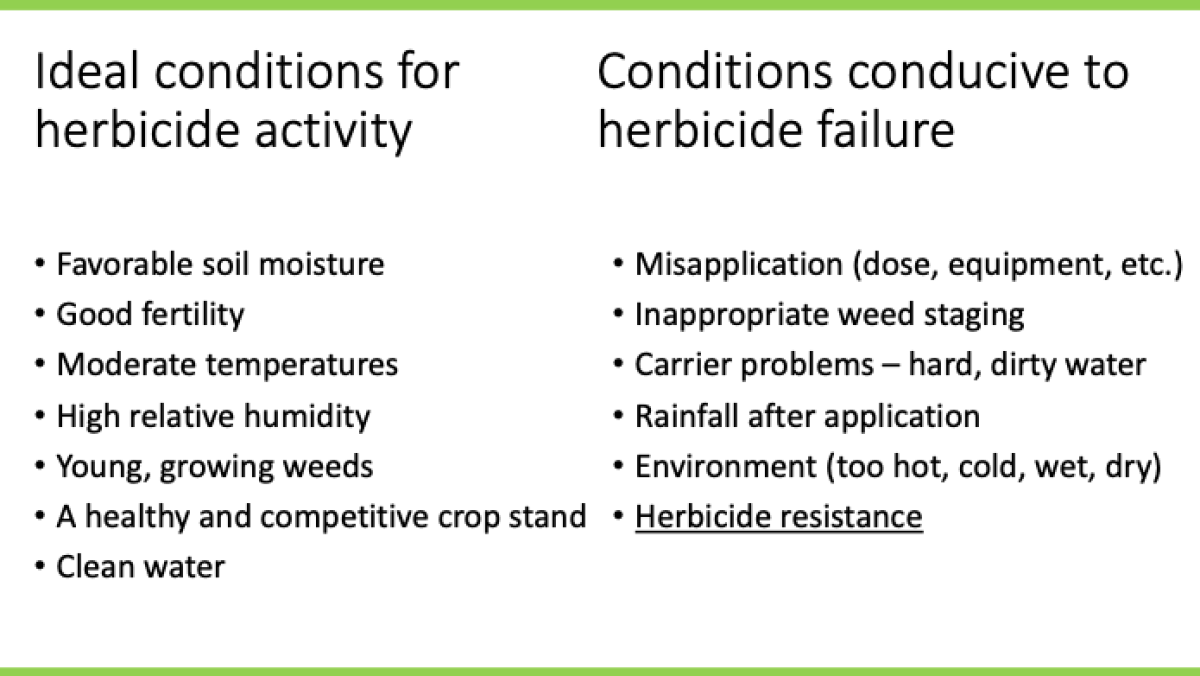
2) Compare with the potential signs of herbicide resistance. One key sign of herbicide resistance is live plants next to dead plants of the same species.
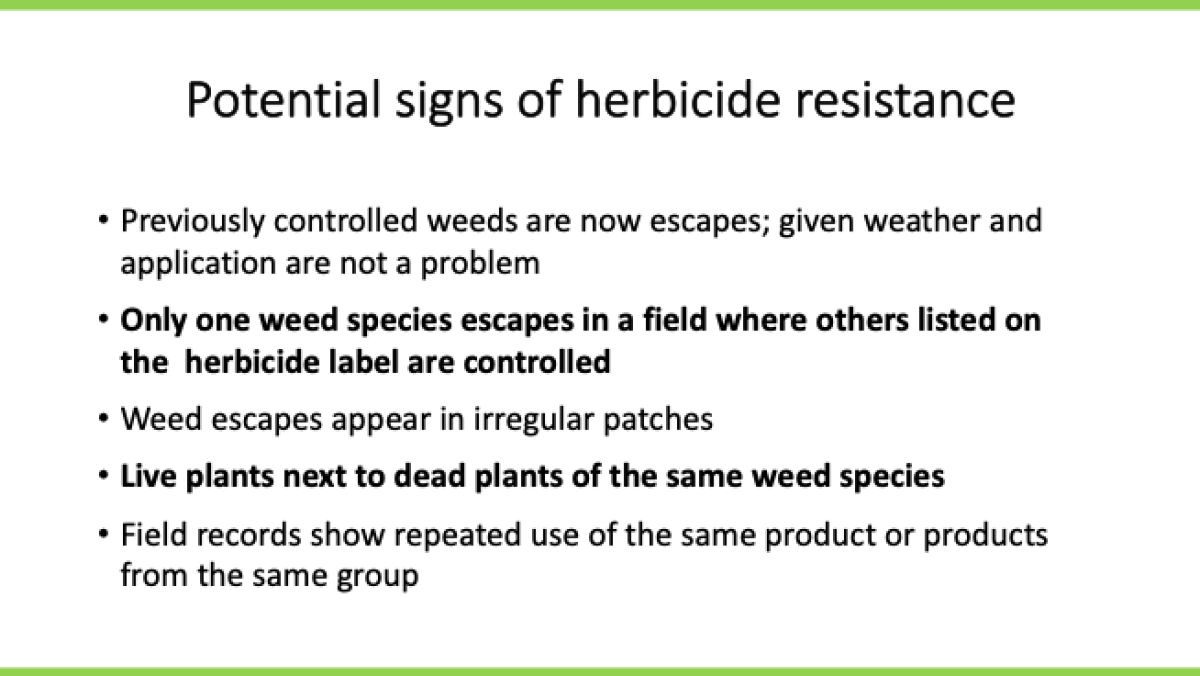
3) If caught early, look at other chemical control options. Rotate the chemical group, if possible, and consider mixing multiple effective herbicide modes of action. If found at later stages, consider non-chemical management, such as mowing, clipping or other methods to prevent viable seed production from the patch of HR weeds.
4) Collect seed samples from the suspected plants, send to testing labs. Currently, most herbicide resistance tests require samples of mature seeds from the weed patch. Pay close attention to the weed patch of concern and harvest the seeds to send away when they are mature and dry.
• Most weeds have mature, viable seed before crop harvest
• Seeds from some species, such as kochia or Russian thistle, are best collected after harvest
Examples of herbicide resistance diagnostic labs is as follows:
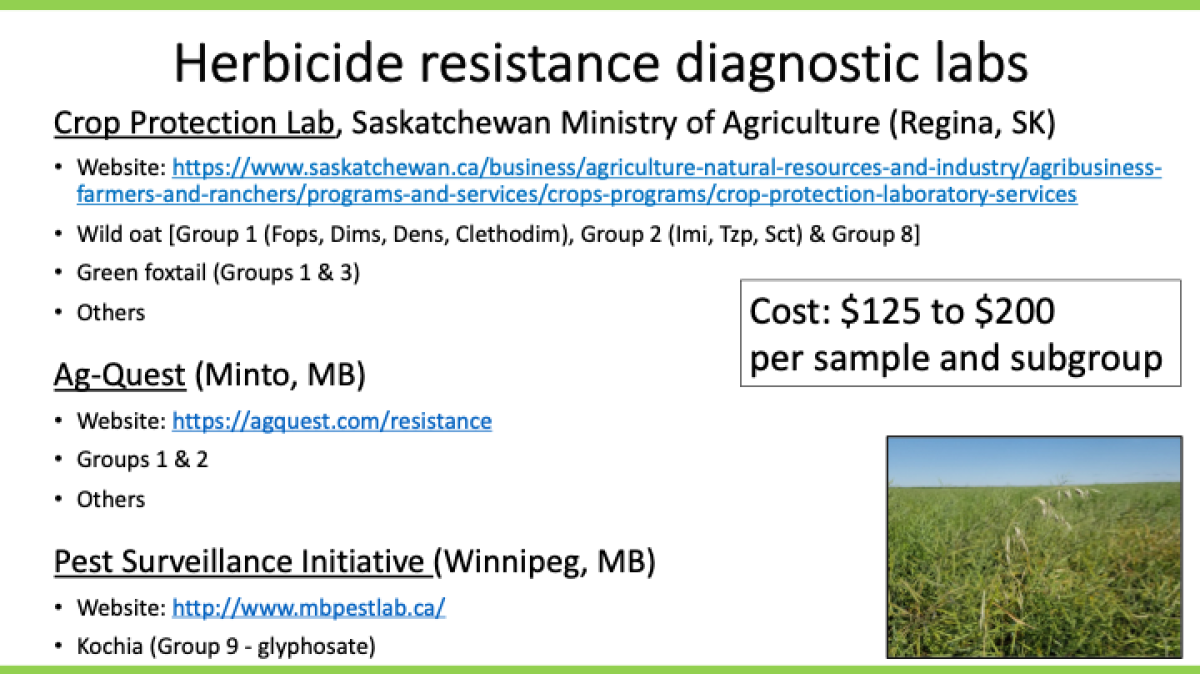
Refer to the following websites for sample collection and shipping requirements:
For any novel herbicide resistance, defined as suspected HR weeds not known to occur across broad acreage on the Canadian Prairies, growers are encouraged to contact Dr. Charles Geddes and inquire if the lab accepts the sample (and test them for free). Geddes’s lab is aiming to catch herbicide resistance in the early phase so that the appropriate research can be conducted to determine how to manage the problem before it is widespread.
Testing for resistance helps with weed management decisions down the road. For example, Group 14 herbicides are used increasingly as resistance to other herbicides emerges. In this case, risk is present for kochia to develop herbicide resistance.
What to do if new herbicide resistance is found?
1) Use herbicide mixtures or rotate herbicide groups
2) Cultural practices
o Using methods to make your crop more competitive with weeds
- Planting winter annuals;
- Increase seeding rate (or specifically double-seed the weedy patch);
- Plant more competitive crops/varieties
3) Physical practices:
o Interrupting weed life cycle: effective in preventing the weeds from re-seeding, helps in reducing weed seed bank.
- Cutting the crop for silage;
- Harvest weed seed control
- Mowing patches
- Strategic tillage
More integrated weed management strategies can be found on this poster.
In conclusion, scouting is important in managing weeds. Prevention is a more effective and much less costly approach to manage herbicide resistance. If herbicide resistance is found, growers are highly recommended to use an integrated approach, without overly relying on certain herbicides.
This article is developed according to the webinar, with the help from Dr. Charles Geddes, Research Scientist at AAFC Lethbridge. To learn more, watch this video on post herbicide scouting for weed control and resistance Dr. Charles Geddes
